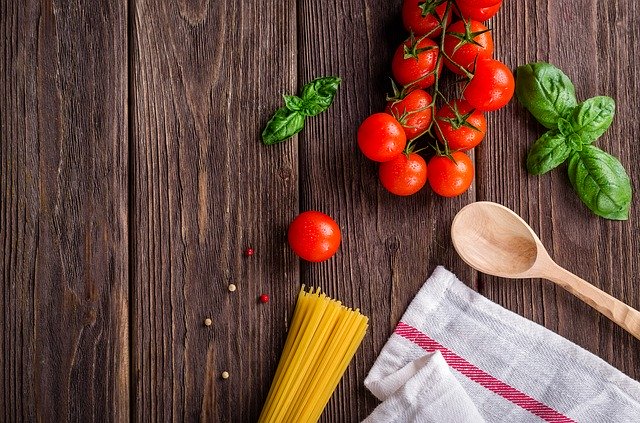
We are constantly led to believe that eating healthy costs a lot more money and that is not without some merit. But forking over the cheeseburger in favor of some eggplant is not going to break the bank either.
If you are considering trying a healthier approach to your food consumption or if you are being forced into it kicking and screaming because you have been diagnosed with a condition like diabetes or some other dietary restriction, fear not. We are here to help you understand the benefits and figure out how to make a healthy diet a reality.
What is Eating Healthy?
When we talk about healthy eating, we are referring to the choice to cut out unnecessary fats and sugars and opt for healthy vegetables, fruits, and lean proteins. Having a healthy diet is crucial to heart health maintaining blood sugar levels that are in the healthy range.
There is also a benefit to your mental health as well. Eating healthy foods consistently can improve your mood and leave you feeling energized. This is due to 95% of the body’s serotonin being produced in its gastrointestinal tract. As you digest healthy food and its “good” bacteria, your body will have an easier time limiting inflammation and absorbing nutrients. This has a tremendous benefit to your overall disposition.
But still, many people are scared away from eating healthy because it appears too restrictive. Not so, says Madalyn Vasquez, a registered dietitian at Summit Health. “Oftentimes there is misinformation in the media that we should cut certain foods out of our diet entirely, but what is most important is that we eat a balanced diet and do not miss the opportunity to have certain nutrients that our bodies need.”
Eating healthy doesn’t mean you have to cut out all of your favorite foods, instead, you can practice moderation. Even the healthiest gym rats enjoy a so-called “cheat day” every week! But no one can force you to make the changes you need to eat healthier, you have to really want it. “Every American adult is responsible for his or her own health. We should take that responsibility very seriously and use our freedom to make wise lifestyle choices that will protect our health,” says Whole Foods CEO John Mackey.
By following this guide, you can start to take responsibility without breaking the bank.
Plan Ahead
The number one thing you can do in this life to set yourself up for success is to plan ahead. “Pick a day of the week, usually Sunday, and make that your meal prep day,” suggests Anne-Marie Faiola, CEO & Founder of Bramble Berry. “This will allow you to think about what you are going to need to get through the week and will help you decide how you will stretch your dollar.”
To make this work for you, take stock of all the items you have in the house already and then write out a grocery list of all the ingredients you will need to make your recipes. You will need to adapt your old recipes to fit your new lifestyle, so there will be a period of trial and error.
To get the most bang for your buck, try to stick to dishes that have common ingredients across multiple meals. This doesn’t mean everything will taste the same since you can use herbs and spices to make different dishes. “I went on an Asian-food kick and I made a ton of healthy chicken dishes that were easy to prepare and diversify simply by changing the style of sauce I cooked with,” says Founder & CEO of Bite Lindsay McCormick. “You would be shocked at how different a dish with soy sauce is than one with ponzu.”
Stretching recipes will also help on meal prep days. Cooking one giant casserole that you can stretch out until Thursday will save you a ton on your meals during the week and will have the added benefit of saving you a lot of time in the kitchen. Plus, once you have all the healthy ingredients in your home thanks to meal prep day, you will be less likely to reach for unhealthy options.
Stick to That List
Now that you have that list you wrote for the meal prep, stick to it. “Shopping lists make it easier and faster to grocery shop,” says Jeff Goodwin, Sr. Director, Performance Marketing & E-Commerce at Orgain. “Sticking to your list will keep you from buying unnecessary items which can add up at check-out.”
If you are eating healthy, most of your shopping should be done on the perimeter of the store. This is because that is where the whole foods are placed. Your list should mainly contain items found in that area. “Whole Foods is expensive but whole foods are usually cheaper,” says Shaun Price, Head of Customer Acquisition at MitoQ. “Whole grains like rice and oats are cheaper per serving while bulk-items are always the way to go if you are looking to save. Joining a box store will actually save you money in the long run if you shop there frequently and buy large quantities of frozen foods.”
Frozen Foods
Speaking of frozen foods, frozen fruits and veggies are often overlooked as a great alternative to their more expensive counterparts. “Fruits and veggies are usually expensive when fresh because they are only in season during certain times of the year,” says Michael Jankie, Founder of The Natural Patch Co. “You can buy your favorite produce in bulk and use it in all sorts of recipes.”
Some popular ways to cook with frozen produce are to make smoothies, use them as topping in oatmeal, cereal, and yogurt or just eat them as a snack. Another benefit is that you only have to thaw the amount that you plan on using; another way frozen food helps to save you money.
Canned Food
Canned options deserve a shout-out too! Many canned options have the same amount of nutrients as their fresh counterparts. “Canned beans, tuna, and other fish are a great source of protein and they won’t spoil after a few days,” says Stephanie Venn-Watson, CEO of Seraphina Therapeutics. “Just make sure that you read the label to make sure that there aren’t any added sugars or sodium.”
That is truly one of the only downsides to shopping for canned goods. Luckily, most stores will have clearly labeled “low sodium” or “No-added Sugar” options that you can choose instead. Nonperishables will last much longer and help you portion correctly.
Become Coupon Royalty
Now that you have your shipping list all planned out, turn to the coupon page of your local grocery store’s flier and start clipping. You can also grab coupons online or via a store’s app. “There are over a billion coupons out there every year for you to choose from,” says Lauren Kleinman, Co-Founder of The Quality Edit. “You can save hundreds of dollars a year on groceries by taking the time to find and use them.”
Don’t be afraid to stray from your list if there is a coupon for something that is not on it. If shrimp is on sale this week instead of salmon, swap out the two. Most of your recipes will still work with a little tweak.
“Coupons may seem outdated,” says Hector Gutierrez, CEO of JOI. “But even if you were to only use five low-value 50-cent coupons a week, that would add up to over $100 per year in savings. If you are truly on a budget, you cannot underscore the importance of using coupons.



